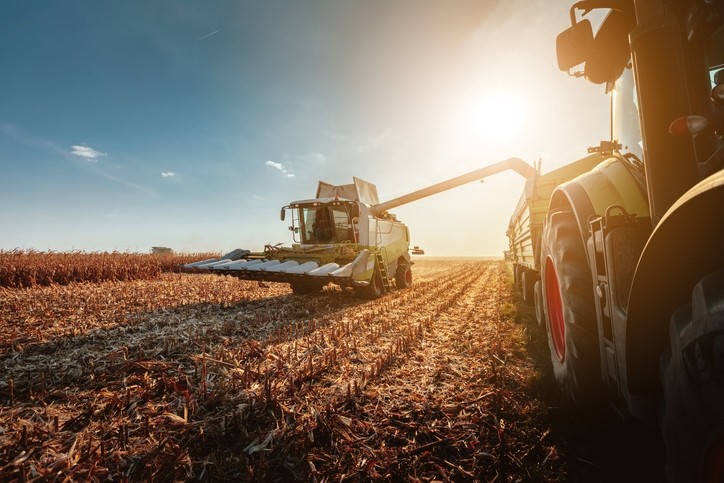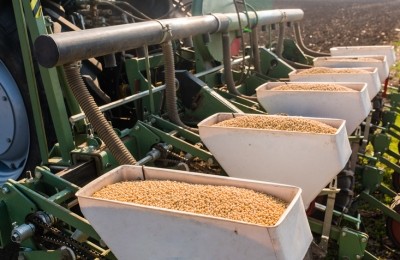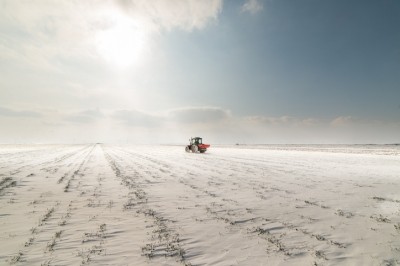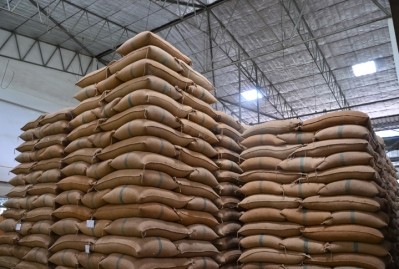Corn production increases, as regional dry conditions continue

The US Department of Agriculture (USDA) released details of feed crop production in a report on Monday.
Overall corn continues to outpace the production markers set last year, as do soybeans to a lesser extent, the department said. However, crop quality conditions also slid slightly.
Feed crops in some parts of the country have been facing weather-based challenges since the spring, said Scott Stiles, instructor in the department of agricultural economics and agricultural business with the University of Arkansas. However, total yields predictions for some feed crops including soybeans were increased by the USDA in the most recent WASDE report.
“When you add three bushels [to yield per acre], you add 276m bushels to supply that was one of the key reasons that prices reacted so negatively – we’ve got a large crop,” he told FeedNavigator. Some states are predicted to have record yields for corn or soybean acres.
Regionally, producers are expected to have good yields for feed crops, though maybe not at record levels, he said. “The bigger issue this year is we’ve been in one of the dry parts of the country,” he added.
“Right now 89% of the state is rated abnormally dry, little over 63% is in moderate drought and there are few areas of the state that have been [experiencing] extremely dry conditions,” he said. Feed crop producers have been irrigating since May, which raises production costs, he added.
“We had one of the coldest Aprils on record and the hottest May on record,” said Stiles, adding that crops have been progressing quickly, but also consumed much of the available soil moisture early.
“We looked at average fuel prices – they’re up 40% compared to last year, and then with May being so dry that caused some problems with herbicide activations,” he said. “We’ve been behind in trying to get the crop clean, so we had some added costs. Those are probably the two main issues – higher fuel and struggle with weeds.”
The challenges have applied to several of the feed and grain crops grown in the area, including soybeans, corn and cotton, he said.
Sprinting corn
Overall corn has been developing more quickly in recent weeks than it did last year, or for the last few years, said USDA.
By this point last year, about 58% of the crop had reached the corn dough stage and on average about 56% of the crop has, the department reported. This year about 73% of the crop has hit that mark, and at least 90% of the crop in four states – Illinois, North Carolina, Tennessee and Texas – has reached that level of maturity.
Similarly, about 26% of the crop in the 18 states responsible for the majority of the corn production last year have reached the corn denting stage, the department said. The pace is ahead of the 15% seen last year and the average of 13%.
Corn condition overall has improved on last year by this point in the growing season, the department reported. However, the 70% reported to be in good or excellent condition is down slightly from last week’s rating.
Soy growth and conditions
For the soybean crop in the 18 states responsible for the majority of the production last year, the production pace is somewhat ahead of last year, said the USDA. In 2017, about 93% of the crop was blooming by this point in the year, and this year 96% is.
On average about 72% of the crop is setting pods by this point in the year, and last year 77% was, the department said. This year 84% of the crop has reached that stage.
The crop condition rating dropped slightly from last week, with about 66% considered good or excellent quality, the department said. States with some of the lower scores for excellent ratings include Kansas, Michigan and Missouri.
Producers in some regions, including Arkansas, may be seeing a drop in quality from the dry weather, added Stiles. The soybean crop there has not met quality results set across the country or in-state last year.
Additionally, market conditions for producers continue to be a challenge, he said. Prices are about $2 off the highs set at the end of May. “That’s the future price decline – it’s hard to pinpoint what’s driving price most, but trade is one of the reasons – we don’t know how much impact is this trade tiff with China is going to have with demand.”
“It’s a large crop on the way in the US and the trade issue is part of the issue,” he said. With “our proximity to the gulf – we’re very reliant on trade – we’re exporting probably about 60% and when you’ve got an issue like this the steady demand from China like we’ve had it impacts the cash prices.”
However, current prices are unlikely to mean producers will be profitable, especially on rental property, said Stiles. “The most common rent arrangement is 25% share rent and at the current prices today we’re not covering variable costs – we’d have to see record yield above 52 bushels [and] we’re not going to average that across the state,” he added.
Basis also continues to be weak, he said. Typically, weak basis prices do not improve until later in the year when the export market interest in soybeans increases.
Wheat, barley, oats and sorghum
Winter wheat production is slightly behind where it was at this point last year and where it has been on average, said the USDA. About 94% of the crop has been harvested, down from the 97% collected by this time last year.
Spring wheat, however, has been outpacing average production, the department reported. About 35% of the crop has been harvested, up from the average 27%.
Oat production is slightly ahead of last year’s pace with about 67% of the crop collected, compared to last year’s 64%, the department said.
Sorghum production is slightly behind where it has been on average, but is keeping pace with last year’s production, the USDA reported. About 21% of the crop in the 11 states responsible for the majority of the production has reached maturity.
Condition for the feed crop is remaining steady, with about 49% considered good or excellent both last week and this week, the department said.
The barley harvest is somewhat lagging the pace set last year, but ahead of the average pace, the department said. About 41% of the crop has been collected in the five states responsible for the majority of the crop.












